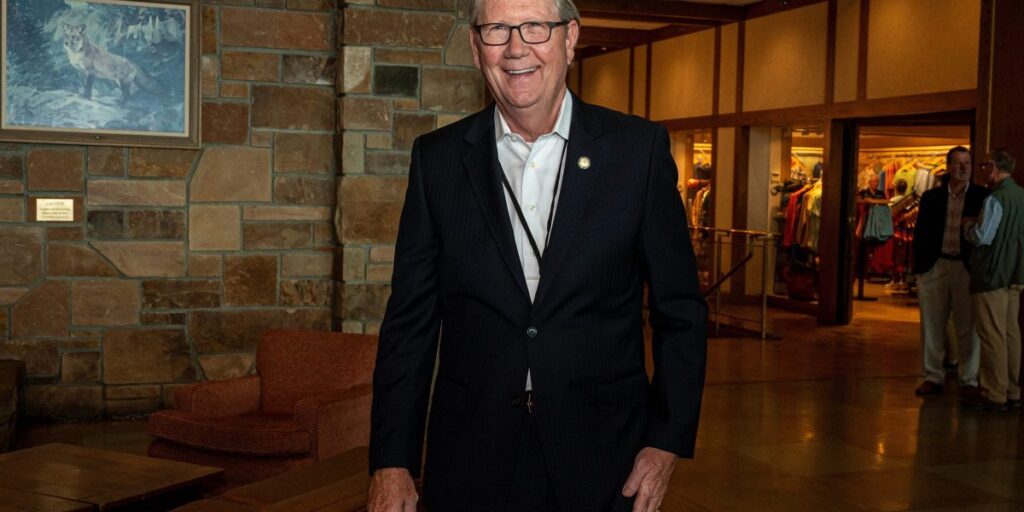Fed president throws doubt onto September rate cut Wall Street is desperate for
“We should be looking for the worst in the data rather than the best.”


The markets might be panicking about last week’s jobs report but Jeffrey Schmid, president of the Federal Reserve Bank of Kansas City, certainly isn’t. In fact, he believes the labor market is healthy.
Speaking at the Kansas Bankers Association annual meeting Thursday, Schmid didn’t drop any of the hints Wall Street analysts might be hoping for.
Namely, they want to see a growing sense of confidence among Federal Open Market Committee (FOMC) members that inflation is firmly on track down to the 2% benchmark, meaning the base rate will soon be cut.
And while the consensus on the Street is that September will mark the first cut, bringing the base rate down from a two-decade high, FOMC insiders are determinedly noncommittal.
During his speech this week, Schmid, who is an alternate member of the 2024 committee, made optimistic but reserved observations about the current state of inflation.
With inflation currently sitting at 3%—a point ahead of the Fed’s target—Schmid said, “We are close, but we are still not quite there.”
Schmid, who will have his first voting rotation on the FOMC next year, added that recent monthly price numbers have been “encouraging” and thus have made him “more confident that inflation is on a path to return to our target.”
But he’s not convinced just yet.
“Price data can be volatile, and it is standard practice to look at inflation over longer periods of time to smooth through the monthly ups and downs,” Schmid explained. “Given the multi-decade shock to inflation that we have experienced, we should be looking for the worst in the data rather than the best.”
His take could change, he added—though whether a shift in his stance will occur before September remains to be seen.
“If inflation continues to come in low, my confidence will grow that we are on track to meet the price stability part of our mandate, and it will be appropriate to adjust the stance of policy,” Schmid added.
Employment questions economic resilience
While FOMC members are determinedly independent from politics, analysts and markets, they do have two indicators they are charged with overseeing: both inflation and stable employment.
It is the latter part of this dual mandate which has caused upset in the past week. Last Friday’s jobs report from the Labor Department threw an unexpected spanner in the works when it revealed unemployment had risen to 4.3%, ahead of expectations.
A domino effect of a weaker jobs report led to questions about America’s economic resilience—a fact Schmid is not blind to.
But he countered: “At the Kansas City Fed, we combine information from 26 labor market indicators into what we call the KC Labor Market Conditions Indicator (or LMCI). Looking much broader than the unemployment rate alone, the labor market still appears to be quite strong by this measure.”
Variables included in the LMCI are factors such as quits rate, hires rate, announced job cuts, part-time work for economic reasons, job losers and more.
“At this point, the cooling of the labor market can be viewed as a necessary condition for the easing of inflation that we have experienced,” Schmid continued.
“Imbalances in the labor market were a key factor keeping inflation high, and a looser market was needed to bring inflation down.”
For analysts who view the spike in unemployment as a sign the U.S. may be headed for recession owing to a drop in GDP, this is unwelcome news.
Optimistic on growth
Schmid pushed back on such worries, noting that he also remains optimistic on growth. “Real GDP increased over 3% last year, faster than any year but one in the decade prior to the pandemic, notwithstanding the low interest rates of that era,” he said.
“More recently, real GDP increased a further 2.75% in the second quarter, supported by the continued strength of consumer demand and solid investment spending… while it is admittedly early, indicators for the third quarter show these trends continuing.
“Even more important, as I talk to contacts in the region, I continue to hear a general tone of optimism and resilience.”
Schmid also echoed the position the Fed is taking with regarding pressure from outside sources—be it from Wall Street or White House hopefuls.
“Following recent sharp movements in financial markets, it is important to stress that all discussions of monetary policy must be rooted in Congress’s instruction that the Fed pursue a dual mandate of price stability and full employment,” he said.
While financial conditions can reveal important importation about the economy’s trajectory, he added, “the Fed has to remain focused on achieving its dual mandate, and in recent years we have had our work cut out for us.”






